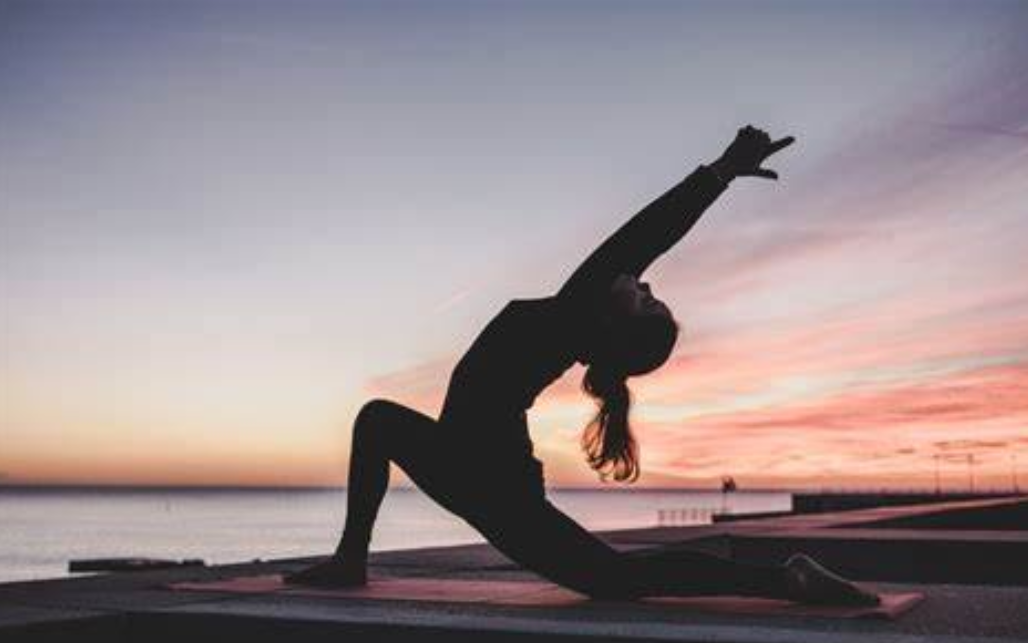Somatic yoga is a transformative and integrative approach to wellness that combines the principles of traditional yoga with somatic movement practices.
By focusing on body awareness, gentle movements, and mindfulness, somatic yoga helps individuals release tension, improve mobility, and deepen their connection with their inner selves. This practice has garnered attention for its holistic benefits, offering a unique pathway to healing and self-discovery.
What is Somatic Yoga?
Derived from the Greek word “soma,” meaning “body,” somatic yoga emphasizes the experience of movement from within. Unlike traditional yoga, which often focuses on achieving specific postures and external alignment, somatic yoga encourages practitioners to explore how movements feel internally.
This inward focus helps individuals become more attuned to their physical sensations, emotions, and overall well-being.
Somatic yoga draws inspiration from various modalities, including Hanna Somatics, Feldenkrais Method, and other body-mind integration practices. It is rooted in the idea that the body and mind are interconnected and that by addressing habitual tension patterns, we can unlock physical, emotional, and mental blockages.
The Principles of Somatic Yoga
At its core, somatic yoga is guided by principles that set it apart from other movement practices. These include:
Embodiment: Somatic yoga encourages individuals to fully inhabit their bodies, fostering a sense of presence and awareness.
Mindfulness: The practice focuses on slow, deliberate movements, emphasizing the quality of the experience rather than the outcome.
Neuroplasticity: By engaging in intentional and novel movements, somatic yoga supports the brain’s ability to rewire itself, creating healthier patterns of movement and thought.
Self-regulation: Somatic yoga empowers practitioners to listen to their bodies and adjust movements to suit their unique needs.
These principles make somatic yoga a highly personalized and adaptable practice, suitable for people of all ages and fitness levels.
The Benefits of Somatic Yoga
Somatic yoga offers a wide range of benefits that extend beyond physical fitness. Its holistic approach nurtures the body, mind, and spirit, making it a valuable tool for overall well-being. Here are some of its key benefits:
Reduces Stress and Anxiety
Somatic yoga encourages deep relaxation by promoting mindful awareness of the body. The slow, meditative movements help calm the nervous system, reducing stress and anxiety while fostering a sense of inner peace.
Improves Flexibility and Mobility
By gently releasing tension in muscles and connective tissues, somatic yoga enhances flexibility and joint mobility. Unlike traditional yoga, it prioritizes ease and comfort over achieving challenging poses.
Alleviates Chronic Pain
Somatic yoga has been shown to be effective in managing chronic pain. Through mindful movement and the re-education of the nervous system, it helps reduce pain perception and address habitual tension patterns that contribute to discomfort.
Enhances Mind-Body Connection
The practice encourages a deeper awareness of physical sensations, emotions, and mental states, fostering a stronger connection between the body and mind. This heightened awareness can improve coordination, balance, and overall body mechanics.
Supports Trauma Recovery
Somatic yoga is particularly beneficial for individuals recovering from trauma. By creating a safe space to explore and reconnect with bodily sensations, it can help release trauma stored in the body and promote healing.
Boosts Neuroplasticity
Somatic yoga engages the brain in novel ways, encouraging it to form new neural pathways. This process, known as neuroplasticity, enhances learning, adaptability, and the development of healthier movement patterns.
How Somatic Yoga is Practiced
A typical somatic yoga session involves a series of gentle, mindful movements performed with a focus on internal sensations. These movements are often slow and repetitive, allowing practitioners to explore their range of motion and identify areas of tension or discomfort.
Unlike traditional yoga classes, somatic yoga does not adhere to a fixed sequence of poses. Instead, it encourages intuitive movement and self-exploration. Some common elements of a somatic yoga session include:
Body Scans: Practitioners are guided to bring awareness to different parts of their body, noticing sensations and areas of tension.
Gentle Stretching: Movements are slow and deliberate, with an emphasis on comfort and ease.
Mindful Breathing: Deep, conscious breathing helps anchor the practice and promote relaxation.
Exploratory Movements: Participants are encouraged to experiment with movements that feel natural and nourishing to their bodies.
Who Can Benefit from Somatic Yoga?
One of the most appealing aspects of somatic yoga is its accessibility. The practice is suitable for people of all ages, fitness levels, and backgrounds. It is particularly beneficial for:
Individuals experiencing chronic pain or tension
Those recovering from injury or trauma
People seeking stress relief and relaxation
Older adults looking to improve mobility and balance
Anyone interested in deepening their mind-body connection
Because of its gentle and adaptable nature, somatic yoga is an excellent option for beginners and experienced practitioners alike.
Incorporating Somatic Yoga into Daily Life
Integrating somatic yoga into your routine can be a transformative journey toward greater self-awareness and well-being. To get started, consider these tips:
Start Small: Begin with short, daily sessions to familiarize yourself with the movements and principles of somatic yoga.
Focus on Sensations: Pay attention to how your body feels during each movement, rather than striving for perfection.
Create a Calming Environment: Practice in a quiet, comfortable space where you can focus without distractions.
Seek Guidance: Explore online resources, such as guided videos or virtual classes, to help you develop your practice.
Be Patient: Remember that somatic yoga is a journey of self-discovery. Allow yourself time to explore and grow.
In Closing
Somatic yoga is more than just a physical practice—it is a holistic approach to wellness that nurtures the body, mind, and spirit. By focusing on mindful movement, internal awareness, and self-compassion, somatic yoga offers a path to healing, transformation, and a deeper connection with oneself.
Whether you are seeking relief from pain, stress, or simply looking to enhance your well-being, somatic yoga is a powerful tool that can guide you toward a more balanced and fulfilling life.
FAQs
Q: How does Somatic Yoga differ from traditional yoga?
Traditional yoga typically involves following structured sequences of poses designed to improve flexibility, strength, and balance. In contrast, Somatic Yoga prioritizes internal awareness over external form. Practitioners engage in slow, mindful movements, paying close attention to bodily sensations to identify and release areas of tension. This method emphasizes the quality of movement and the sensory experience, rather than the attainment of specific postures.
Q: What are the benefits of practicing Somatic Yoga?
Engaging in Somatic Yoga offers numerous physical and mental health benefits. Physically, it can enhance flexibility, improve posture, and alleviate chronic muscle tension by retraining the nervous system to release habitual patterns of contraction. Mentally, the practice fosters a deeper mind-body connection, reduces stress, and promotes emotional healing by encouraging mindfulness and self-awareness. This holistic approach supports overall well-being and can be particularly beneficial for individuals dealing with chronic pain or recovering from trauma.
Q: Who can benefit from Somatic Yoga?
Somatic Yoga is accessible to individuals of all ages and fitness levels, including those new to yoga or exercise. Its gentle, mindful approach makes it particularly suitable for people managing chronic pain, recovering from injuries, or seeking stress relief. Additionally, individuals interested in enhancing their body awareness and exploring a more introspective form of movement may find Somatic Yoga especially rewarding.
Q: How can I get started with Somatic Yoga?
Beginning a Somatic Yoga practice requires minimal equipment—just comfortable clothing and a space to move. Many online resources, including videos and guided sessions, are available to help newcomers learn the basics. For personalized instruction, consider seeking out certified Somatic Yoga instructors or classes in your area. As with any new exercise regimen, it’s advisable to consult with a healthcare provider before starting, especially if you have existing health conditions.
Q: Are there any precautions to consider with Somatic Yoga?
While Somatic Yoga is generally gentle and safe, it’s important to listen to your body and move within your comfort zone. Avoid pushing into pain or discomfort, and focus on the quality of movement rather than achieving specific poses. If you have any medical conditions or concerns, consult with a healthcare professional before beginning the practice. Additionally, working with a qualified instructor can ensure that you perform movements correctly and safely.
To read more, click here.




